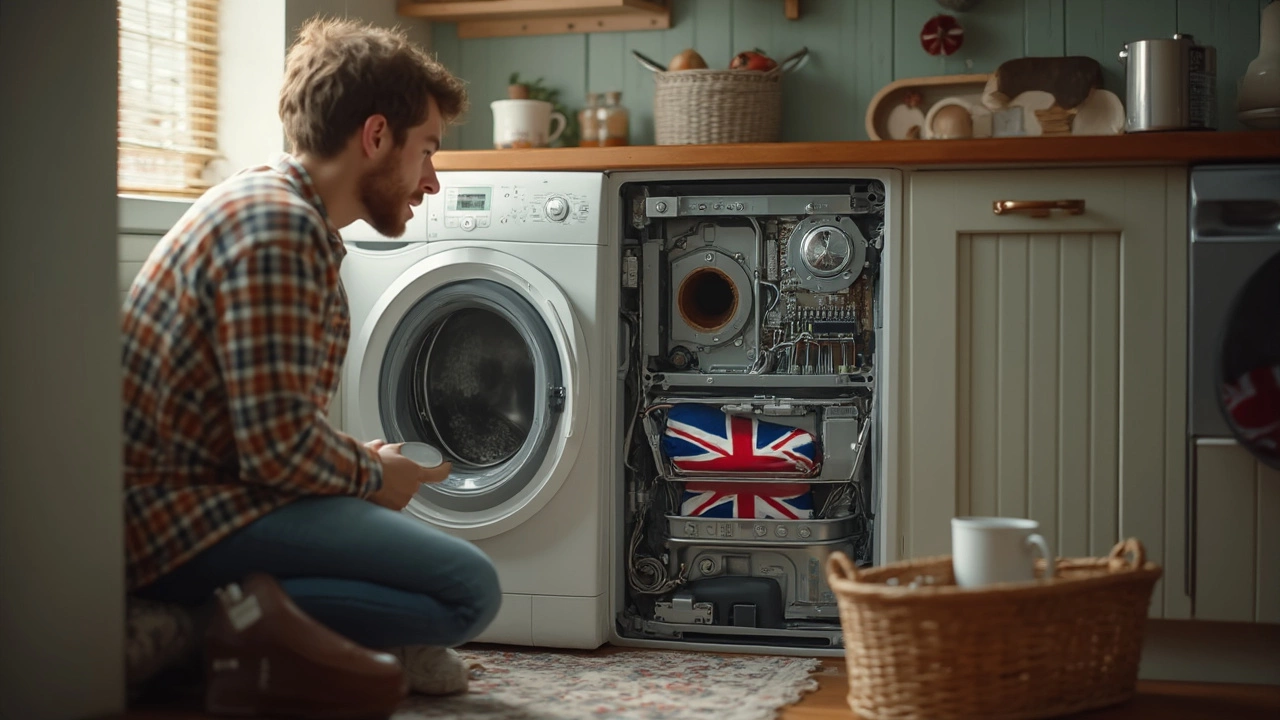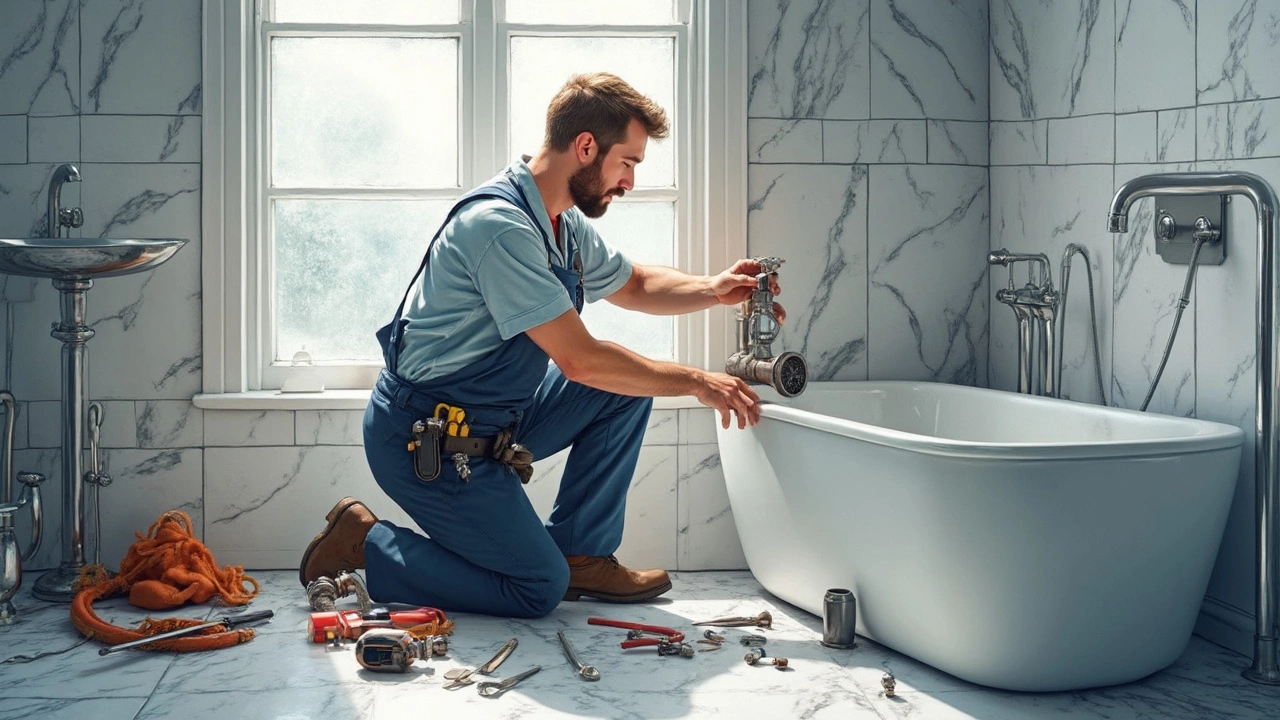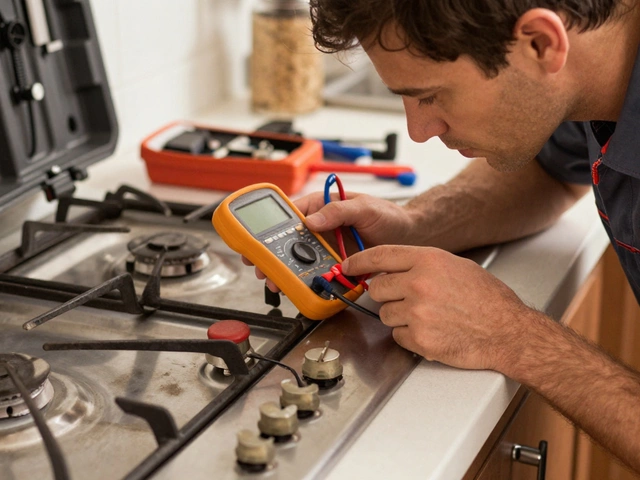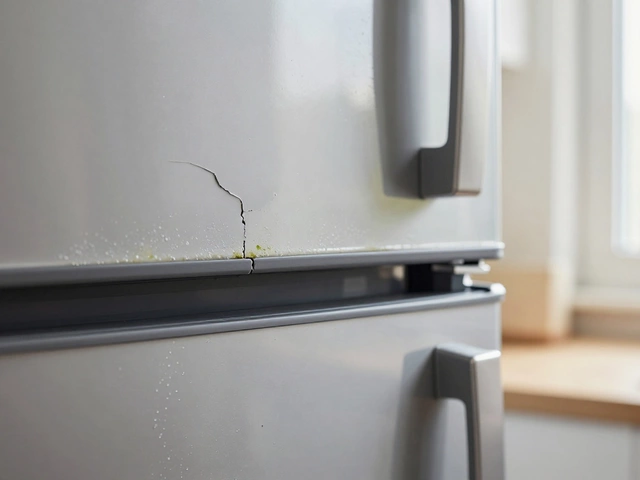Your house feels as warm as ever, but you can hear the heat pump humming outside. It’s a classic problem—you pay for cooling, but your system just isn’t delivering. Annoying, right?
Before you shell out for repairs, there are a few things to look for. Dirty air filters are the usual suspects. If it’s clogged, your system can’t breathe, much less cool down your home. Swapping out a filter is a five-minute job and can save you hours of sweating.
Next up, check your thermostat. Sometimes it gets bumped into the wrong mode, or batteries just die. If it says 'heat' or doesn’t respond, set it back to 'cool' and lower the temperature a few degrees. Still no luck? Head outside and see if the heat pump’s fan is spinning and sounds normal. Weird noises or a dead-silent unit can point to bigger problems.
Jumping into repairs without knowing what’s wrong can do more harm than good. But a quick look at the filters, breakers, and thermostat might solve the issue right away and save you hassle.
- What Happens When Your Heat Pump Doesn’t Cool
- Easy Checks You Can Do Yourself
- Problems That Need a Pro
- How to Prevent Future Cooling Issues
What Happens When Your Heat Pump Doesn’t Cool
If your heat pump is running but not cooling, it feels like something’s working—but not doing the job you need. The system keeps using electricity, the fan hums, but cooler air never shows up. You end up wasting energy and money—and still sweat through another evening. This usually means something’s off inside the unit, with your thermostat, or with the airflow.
Heat pumps are designed to move heat from inside your home to the outside when in cooling mode. If yours isn’t cooling, that heat removal isn’t happening. The result? The temperature inside barely drops, or even keeps climbing—especially noticeable during a heatwave.
The most common symptoms that signal this issue:
- The unit runs nonstop and never reaches the set temperature on your thermostat.
- Air coming from vents feels lukewarm or barely different from room temperature.
- You hear the outdoor unit cycling, but the indoor air doesn’t feel cool.
- Your energy bill suddenly jumps higher than usual—yep, your system is trying, but failing.
According to the U.S. Department of Energy, nearly half of all homes using heat pumps may experience performance drop if simple maintenance gets skipped, like cleaning filters or coils. Skipping this stuff doesn’t just mean discomfort but also higher bills and faster breakdowns later.
In some cases, there’s even frost or ice building up outside on the heat pump during summer—that’s a big red flag for a refrigerant issue, which means your system isn’t pulling heat out and could cause more damage if you keep running it. Basically, anytime your heat pump looks or acts strange while failing to cool, it’s worth checking before things get worse.
Easy Checks You Can Do Yourself
Let’s start with the basics—stuff you can handle before calling in a pro. Half the time, it’s something simple making your heat pump act up and not cooling.
- Check the Thermostat: Make sure it’s switched to “cool” and the temperature is set below the current room reading. Sounds obvious, but it gets switched by mistake more than you’d think. Try fresh batteries if the display is blank or wonky.
- Change or Clean the Air Filter: A clogged filter suffocates your system, causing weak airflow or no cooling at all. Most pros recommend changing these every 30-90 days. Grab your old filter and check if it’s covered in dust or grime. If it is, pop in a new one.
- Breaker Check: Sometimes, the outdoor or indoor unit’s breaker trips for no obvious reason. Head to your electrical panel and make sure all the breakers for your heat pump are switched ON. Reset any that are off.
- Outdoor Unit Inspection: Take a peek out back. Leaves, sticks, or even a trash bag stuck to the grill can choke the unit. Clear any debris away from the fan and vents. If the coil is loaded with dirt, lightly spray it with a garden hose—a clean unit cools better.
- Check Air Vents Inside: Walk around your place and make sure nothing’s blocking your air vents. Couches, curtains, and rugs love to hog airflow. Keep at least a few inches clear so your system can breathe.
According to heat pump repair data in the U.S., about 40% of no-cooling calls trace back to issues homeowners could spot on their own, especially dirty filters or clogged outdoor units. Quick fixes like these can take your system from "useless" to "chillin’" again—no technician needed.
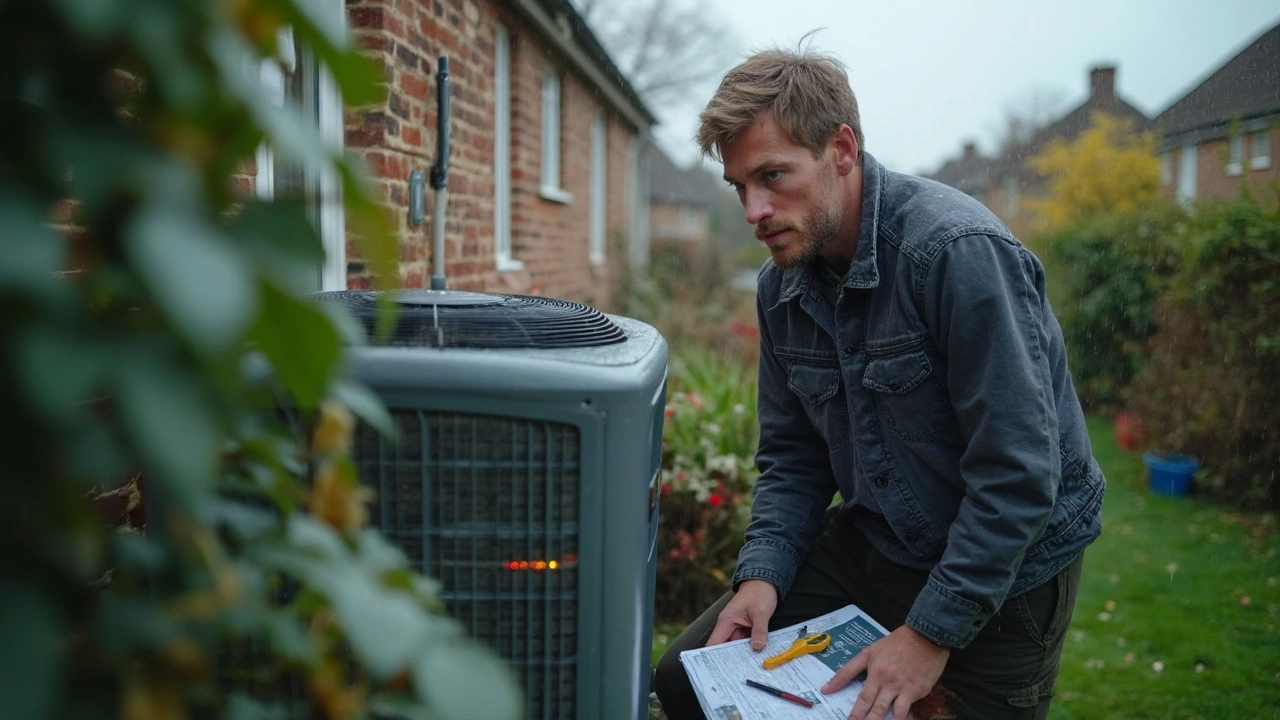
Problems That Need a Pro
Some heat pump issues go way beyond anything you can DIY. If your system’s blowing warm air, making odd grinding or squealing noises, or icing up in the summer, it’s time for a pro. Let’s break down a few headaches you shouldn’t tackle yourself.
- Low Refrigerant: If your heat pump is low on refrigerant, there’s usually a leak. Only licensed techs can legally handle refrigerant since it’s pressurized and needs careful handling. Low refrigerant means your system runs but won’t cool—that’s a classic sign.
- Electrical Issues: Popped breakers, corroded wires, or burned relays can sideline your system. If you’re seeing burnt marks or smelling electrical burning, step away and call a tech right away. Messing with high-voltage parts is risky without the right tools or know-how.
- Bad Reversing Valve: The reversing valve flips your heat pump between heating and cooling. If this part fails, your unit could get stuck in one mode. Swapping it out is a pro-only job—specialized tools and refrigerant work required.
- Frozen Coils: If you spot ice on the outdoor unit in summer, don’t just chip it off. Frozen coils usually mean bigger problems, like airflow restrictions or refrigerant loss. Techs will thaw it safely and get to the root cause.
If you’re dealing with one of these, the cost can vary a lot. Here’s a quick look at national average repair prices:
| Repair Type | Average Cost (USD) |
|---|---|
| Refrigerant Recharge | $200 - $500 |
| Reversing Valve Replacement | $500 - $1,200 |
| Electrical Repairs | $140 - $350 |
When your heat pump is running but not cooling, and basic stuff isn’t fixing it, it’s smart to get a real diagnosis before things get pricier—or more dangerous. The sooner you call a qualified tech, the less damage your system might take.
How to Prevent Future Cooling Issues
Keeping your heat pump in good shape isn’t hard, but it does take some regular attention. If you want to dodge those sweltering days when your system’s running but not cooling, here’s what actually makes a difference.
- Change the air filter every 1-3 months. A dirty filter absolutely tanks your system’s cooling power. During heavy use in summer, check it monthly—if it looks filthy or clogged, swap it out.
- Clean the outdoor unit (condenser). Leaves, dirt, or even lawn clippings can block airflow. Turn off the power, hose it down gently, and clear away any debris at least twice a year.
- Check your thermostat settings. It sounds simple, but you’d be surprised how many cooling calls are because someone flipped a switch by accident.
- Schedule professional maintenance every year. A certified tech looks for hidden problems, from low refrigerant to electrical issues, that are easy to miss. The U.S. Department of Energy says a well-maintained heat pump can use up to 25% less energy than a neglected one. That’s money saved.
- Keep indoor vents clear. Stack of boxes in front of a vent? Furniture pressed against it? Anything that blocks airflow will stop your heat pump from cooling like it should.
If you want to get a bit nerdy with it, here’s how regular upkeep pays off:
| Maintenance Task | Frequency | Impact on Cooling |
|---|---|---|
| Change Air Filter | Monthly (heavy use) | Prevents airflow blockages and system freeze-ups |
| Clean Outdoor Unit | Twice a year | Improves efficiency and lifespan |
| Professional Tune-Up | Yearly | Catches problems early, boosts energy savings |
No one loves paying for repairs, but a little effort here and there can keep your heat pump from letting you down right when you need it most. Think of it like oil changes for your car—skipping them just isn’t worth the headache or the cost.

